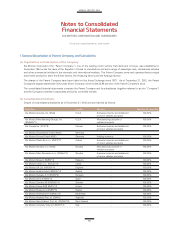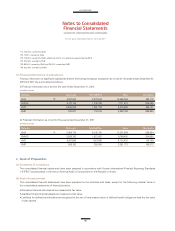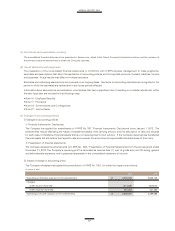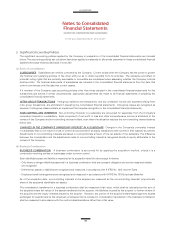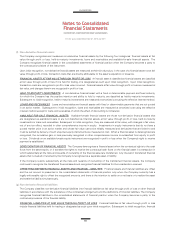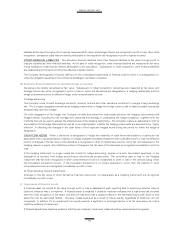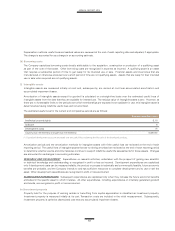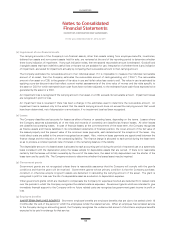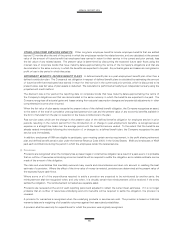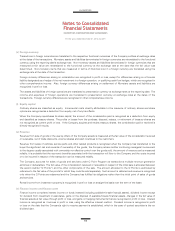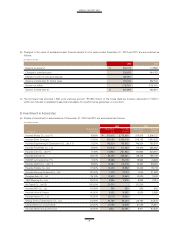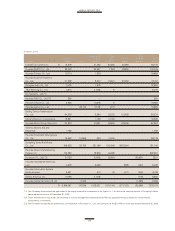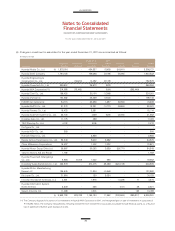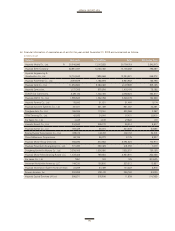Kia 2012 Annual Report Download - page 65
Download and view the complete annual report
Please find page 65 of the 2012 Kia annual report below. You can navigate through the pages in the report by either clicking on the pages listed below, or by using the keyword search tool below to find specific information within the annual report.
OTHER LONG-TERM EMPLOYEE BENEFITS Other long-term employee benefits include employee benefits that are settled
beyond 12 months after the end of the period in which the employees render the related service, and are calculated at the present
value of the amount of future benefit that employees have earned in return for their service in the current and prior periods, less
the fair value of any related assets. The present value is determined by discounting the expected future cash flows using the
interest rate of corporate bonds that have maturity dates approximating the terms of the Company’s obligations and that are
denominated in the same currency in which the benefits are expected to be paid. Any actuarial gains and losses are recognized in
profit or loss in the period in which they arise.
RETIREMENT BENEFITS: DEFINED BENEFIT PLANS A defined benefit plan is a post-employment benefit plan other than a
defined contribution plan. The Company’s net obligation in respect of defined benefit plans is calculated by estimating the amount
of future benefit that employees have earned in return for their service in the current and prior periods, which is discounted to its
present value, less fair value of plan assets is deducted. The calculation is performed annually by an independent actuary using the
projected unit credit method.
The discount rate is the yield at the reporting date on corporate bonds that have maturity dates approximating the terms of
the Company’s obligations and that are denominated in the same currency in which the benefits are expected to be paid. The
Company recognizes all actuarial gains and losses arising from actuarial assumption changes and experiential adjustments in other
comprehensive income when incurred.
When the fair value of plan assets exceeds the present value of the defined benefit obligation, the Company recognizes an asset,
to the extent of the total of cumulative unrecognized past service cost and the present value of any economic benefits available in
the form of refunds from the plan or reduction in the future contributions to the plan.
Past service costs which are the change in the present value of the defined benefits obligation for employee service in prior
periods, resulting in the current period from the introduction of, or change to post-employment benefits, is recognized as an
expense on a straight-line basis over the average period until the benefits become vested. To the extent that the benefits are
already vested immediately following the introduction of, or changes to, a defined benefit plan, the Company recognizes the past
service cost immediately.
In addition, employees of KMA are eligible to participate, upon meeting certain service requirement, in the profit sharing retirement
plan and defined benefit pension plan under the Internal Revenue Code 401(k) in the United States. KMA and employees of KMA
paid each contributions during the period in which the employees render the related service.
(r) Provisions
Provisions are recognized when the Company has a present legal or constructive obligation as a result of a past event, it is probable
that an outflow of resources embodying economic benefits will be required to settle the obligation and a reliable estimate can be
made of the amount of the obligation.
The risks and uncertainties that inevitably surround many events and circumstances are taken into account in reaching the best
estimate of a provision. Where the effect of the time value of money is material, provisions are determined at the present value of
the expected future cash flows.
Where some or all of the expenditures required to settle a provision are expected to be reimbursed by another party, the
reimbursement shall be recognized when, and only when, it is virtually certain that reimbursement will be received if the entity
settles the obligation. The reimbursement is treated as a separate asset.
Provisions are reviewed at the end of each reporting period and adjusted to reflect the current best estimates. If it is no longer
probable that an outflow of resources embodying economic benefits will be required to settle the obligation, the provision is
reversed.
A provision for warranties is recognized when the underlying products or services are sold. The provision is based on historical
warranty data and a weighting of all possible outcomes against their associated probabilities.
A provision shall be used only for expenditures for which the provision was originally recognized.


